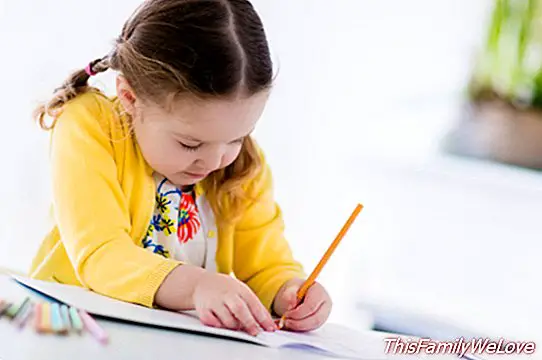Spatial learning, ideas to teach children
How can children learn the concept of spacetime? What do you need to learn to relate them? It is curious that psychomotor exercises, despite being very important, are not the only ones that we need so that they can learn correctly. Reading and writing, and language also play a fundamental role.
After two years, the visual, auditory and motor stimulation of children is so beneficial that it is already essential in their education. All of them intervene in the correct perception of spacetime and, since they are very young, children can be stimulated through listening, language and space.
Stimulation for space-time learning
1. Listen. The task of listening will be to convert linguistic information into spatial information. Children can represent either in drawings, in actions with objects or in actions with people what they have heard well in a sentence or in a story.
However, without an adequate acquisition of visual and auditory (perceptual) knowledge and the practice of motor exercises (the experience of spatial relationships in oneself and in objects), it is almost impossible for the child to acquire the linguistic knowledge of these actions.

2. Reading and writing.Reading and writing have a lot to do with space and time. A word can change its meaning by changing the order or direction of the letters. We can take advantage of any activity to teach children to work always from left to right and top to bottom.
For example, when reading a story we can point out the words we read; on a blackboard we can write models of words or numbers in front of the child so that he can imitate directionality; Through music we can develop rhythm and order: marching, stopping, spinning, slapping etc ... according to the orders we give. Playing to order, classify and make series, (with objects, drawings, people, etc.) will be other fundamental activities.
3. Take advantage of toys.Toys are important tools for children's learning.
- The balls, (of a thousand sizes, materials and textures), the constructions, the puzzles and the tangram They are especially positive.
- Plastic materials they greatly benefit the development of the spatial domain in a plane, so large slates or sheets of paper, finger paints, brushes, wax, clay, plasticine, colors, scissors, punches and other tools are essential for the conquest of space ... Not to mention the benefits for creativity.
- Games that mimic everyday life as medical briefcases, kitchens, stores, parking, dollhouses, carpenter tables, among others, and table and chairs to suit you, in addition to developing spatial ability and body control, help the aspect of socialization.
- Vehicles such as tricycles, scooters, bicycles, skates, and others will round off the offer. We can add, in addition, if you have outside space, the swings, ropes, slides, ball pools, sands, seesaws, climbing structures, etc. If you do not have it, you can review the offer that exists in the surroundings and vary the itinerary of visits to parks and playgrounds so that the child has access to a wide variety of elements that help their spatial development.
When children are afraid of movement
"My son is afraid of any activity that involves movement." First of all, we must rule out possible sensory difficulties. It is difficult for the child to run safely when he does not see well or he does not hear clearly. Now, if we have eliminated these possibilities, the cause of your passivity will most likely be the limited number of opportunities that your brain has been given to know, process and resolve movement situations.
You can be helped with a balance exercise program:
- First, moving the parents in different ways and in all directions.
- Later, with a more active involvement of the child: the balance beam and other exercises that we have raised, the practice of sports ...
"Of my children, the boys are the most skilled." Many parents say the same. It is a fact that many times we treat girls differently than children from the moment of birth. In different studies it is concluded that they are stimulated more frequently, intensity and duration through movement.
We also know that the female brain has more developed zones of expression. It is enough to observe a group of girls playing to discover that they spend a lot of time talking and doing things with their hands, which are two of their greatest skills.
Teisa Dalmau Xiqués




